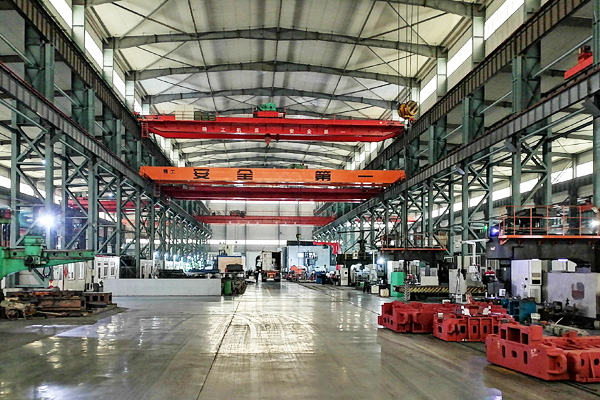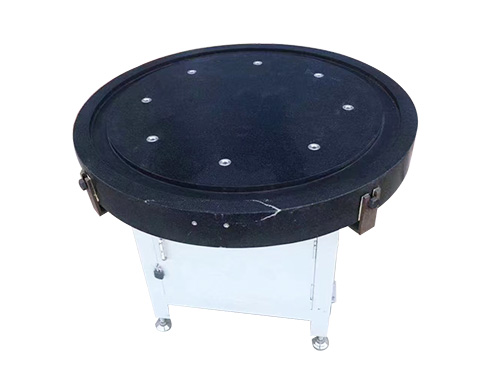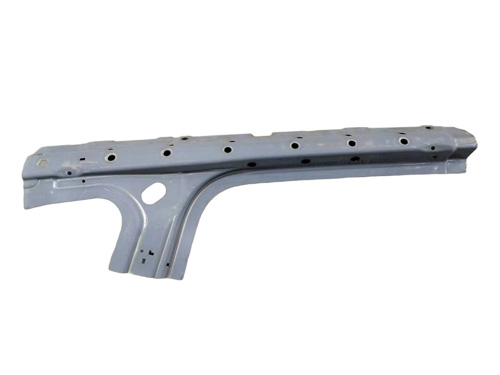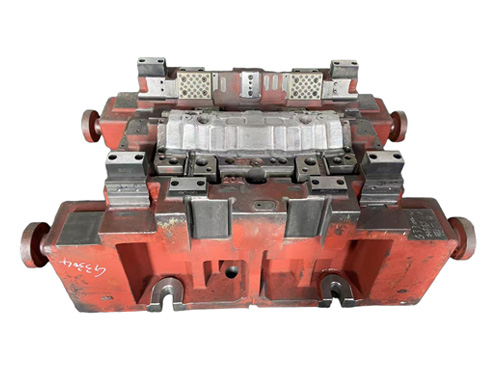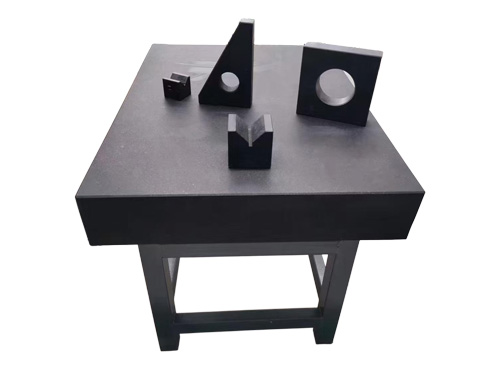News Detail
T-Slot Cast Iron Platform: Why It Is the "Universal Partner" in Mechanical Machining
author:hxrtools Time:2025-05-25 01:52:39 Click:77
In the field of mechanical machining, efficient and precise production hinges on reliable auxiliary equipment. The T-slot cast iron platform, with its unique structural design and outstanding performance, has emerged as a core tool in numerous mechanical machining scenarios. Whether it's for the measurement and calibration of precision parts or the assembly and debugging of large workpieces, it plays a pivotal role.
I. Introduction: The Industry Value of T-Slot Cast Iron Platforms
1.1 Evolving Demand for Basic Platforms in the Mechanical Machining Industry
With the intelligent and precision-oriented development of the manufacturing sector, the requirements for workpiece positioning accuracy and equipment stability in mechanical machining have become increasingly stringent. As a critical element in ensuring production quality, the performance of basic machining platforms directly impacts machining efficiency and product qualification rates. Consequently, the market demand for high-performance machining platforms continues to soar.
1.2 The Natural Suitability of Cast Iron Material
Cast iron material offers cost-effectiveness and mature casting processes, coupled with excellent rigidity and shock absorption capabilities. These attributes enable cast iron platforms to maintain stability in complex machining environments, effectively absorbing vibrations generated during equipment operation and providing a reliable reference plane for mechanical machining.
1.3 Core Focus of This Article: Unraveling the "Universal" Attributes of T-Slot Cast Iron Platforms
This article delves into the structural design, functional characteristics, and application scenarios of T-slot cast iron platforms to explore the reasons behind their widespread adaptability in mechanical machining. It reveals the inherent logic behind their status as the industry's "universal partner."
II. Basic Understanding of T-Slot Cast Iron Platforms
2.1 Device Definition and Functional Overview
A T-slot cast iron platform is a planar reference device crafted from cast iron through casting and machining processes. Its surface is adorned with regularly spaced T-slots that can be paired with bolts, clamping plates, and other workholding fixtures to achieve rapid positioning and secure fixation of workpieces. It finds extensive application in mechanical machining, inspection and testing, assembly and debugging, among other processes.
2.2 Core Component Characteristics
Cast Iron Material Properties: The graphite structure within cast iron imparts exceptional shock absorption capabilities to the platform, effectively buffering vibrations and impacts during machining. Simultaneously, its high hardness and wear resistance ensure that the platform remains resistant to wear over extended use, preserving the accuracy of the reference surface.
Platform Structural Design: A rational arrangement of ribbed plates and a box-like structure enhances the platform's load-bearing capacity, enabling it to withstand heavy loads without deformation and providing stable support for large workpiece machining.
2.3 Mainstream Product Classifications
By Accuracy Grade: Encompassing Grade 0, Grade 1, Grade 2, etc., with Grade 0 offering the highest precision suitable for ultra-precision measurement and calibration. Grades 1 and 2, with decreasing precision, cater to general mechanical machining and assembly needs.
By Purpose: Including measuring platforms, scribing platforms, assembly platforms, etc. Different types of platforms have varying precision requirements and slot layouts tailored to diverse machining scenarios.
2.4 Analysis of Key Technical Parameters
Flatness: Reflects the evenness of the platform's working surface and directly determines the reference accuracy for measurement and machining. Higher flatness results in smaller machining errors.
Load-Bearing Capacity: Determined by the platform's material, structure, and dimensions, necessitating the selection of an appropriate load-bearing specification based on the weight and stress conditions of the actual machined workpiece.
Hardness: An appropriate hardness ensures the platform's resistance to workpiece friction and impacts while facilitating subsequent precision restoration and maintenance.
III. Core Advantages of T-Slot Cast Iron Platforms as the "Universal Partner"
3.1 Flexible and Versatile Workpiece Fixation Methods
The unique design of T-slots allows them to be combined with a variety of workholding fixtures, enabling rapid and precise fixation of both small precision parts and large complex components using bolts and clamping plates. This flexible fixation method significantly broadens the platform's application scope, meeting the machining needs of workpieces of varying sizes and shapes.
3.2 Wide Range of Scenario Adaptability
In mechanical machining, T-slot cast iron platforms participate in every stage, from the initial positioning of parts to the final precision inspection of finished products and the assembly and debugging of equipment. In measurement scenarios, their high-precision working surfaces serve as reference planes; during scribing operations, they facilitate the marking of workpiece machining dimensions; and in assembly processes, they ensure accurate installation positions of components, making them practical tools throughout the entire production process.
3.3 Stable and Reliable Performance
The stability of cast iron material and the robustness of the platform's structure enable T-slot cast iron platforms to adapt to different environments and working conditions. Whether in high-temperature workshops or humid operating environments, they maintain good rigidity and precision, effectively reducing machining errors caused by environmental factors and ensuring stable production quality.
3.4 Balanced Cost and Efficiency
Compared to some high-end material platforms, T-slot cast iron platforms offer higher cost-effectiveness while guaranteeing performance. Their mature casting processes reduce production costs, and their ease of maintenance and long service life save enterprises on equipment procurement and maintenance costs, enhancing overall production efficiency.
IV. Selection and Usage Recommendations
4.1 Scientific Selection Based on Requirements
Accuracy Matching: Choose a platform with the corresponding accuracy grade based on machining accuracy requirements. High-precision machining tasks necessitate the use of Grade 0 or Grade 1 platforms, while general machining can opt for Grade 2 platforms.
Size and Load-Bearing Considerations: Determine the platform's size and load-bearing capacity based on the workpiece's size and weight to ensure that the platform can safely and stably support workpiece machining.
4.2 Supplier Selection and Quality Control
Choose suppliers with production qualifications and quality certifications. Assess product quality by observing the platform's surface quality and testing key parameters (such as flatness and slot pitch accuracy) to ensure the selection of reliable equipment.
4.3 Standardized Installation and Maintenance
Install the platform in a dry, level, and vibration-free environment, and use a level to calibrate its levelness. During daily use, regularly clean the surface of iron filings and oil stains, avoid heavy impacts, and promptly apply anti-rust oil to extend the platform's service life.
V. Industry Trends and Future Outlook
5.1 Technological Innovation Driving Performance Upgrades
In the future, T-slot cast iron platforms will incorporate advanced technologies such as CNC machining and precision grinding to further enhance slot accuracy and platform flatness. The integration of intelligent sensors will enable real-time monitoring and automatic calibration of platform status, meeting higher-precision machining demands.
5.2 Increasingly Prominent Customization Needs
With the development of niche segments in the mechanical machining industry, personalized demands for platforms are on the rise. Suppliers will offer more customized services, adjusting platform dimensions, slot layouts, surface treatment processes, etc., according to customers' specific machining requirements to enhance product adaptability.
5.3 Green and Environmentally Friendly Production Trends
The industry will place greater emphasis on the application of green casting processes to reduce pollution emissions during production. It will promote the use of environmentally friendly surface treatment materials and strengthen the recycling of cast iron scrap to achieve sustainable development.
VI. Conclusion: An Indispensable Partner in Mechanical Machining
The T-slot cast iron platform has earned its reputation as the "universal partner" in the mechanical machining field due to its flexible workpiece fixation methods, wide scenario adaptability, stable performance, and cost-effectiveness. In the current era of rapid manufacturing development, a deep understanding of its characteristics and value, coupled with rational selection and use, will provide solid guarantees for mechanical machining production. If you wish to further explore the application and selection techniques of T-slot cast iron platforms, welcome to follow more professional content and embark on a new journey of efficient machining.
 HOT PRODUCTS
HOT PRODUCTS
 CONTACT US
CONTACT US
—— E-mail:project@haoranmj.com
—— Whatsapp:+86 18932785670
—— Tel:+86 18932785670
—— Add:Across from Sanjing Distillery on Road 4, Botou Economic Development Zone, Cangzhou City, Hebei Province









